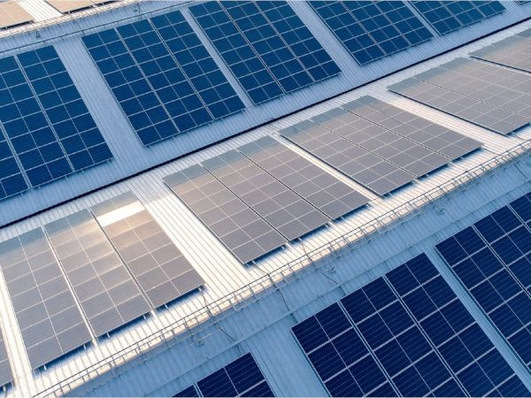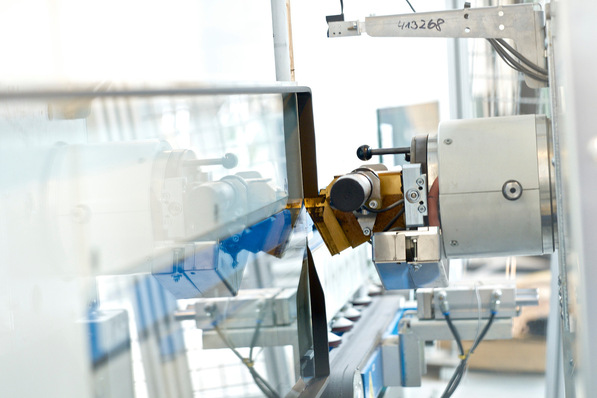Glass processor sadak offers such glass according to all seven bullet classes of DIN EN 1063 in order to provide the right level of protection for every requirement. Government seats and embassies, banks, event venues, airports as well as private homes with increased security requirements: There are many buildings where protection against attacks with firearms plays an important role. This places high demands on transparent surfaces in particular: Bullet-proof glass requires a lot of know-how.
DIN EN 1063 defines seven protection classes for the bullet resistance of glass (BR1 to BR7, Table 1). In the highest class, a pane actually resists attacks with ammunition containing a hardened steel core - so an attack would have to be very severe and military to be "successful".
How does bullet-resistant glass work?

sedak
The solutions for bullet-proof glass include a specific structure to prevent the panes from being destroyed in the event of a hit, a combination of several panes and special films to prevent the glass from splintering.
Protection using insulating glass: A special feature of "sedak isosecure" is that it is both an insulating glass and certified for protection against gun violence in classes BR2 NS to BR 7 NS. The certificate explicitly includes the pane structure with partially tempered glass. "We achieve the high resistance without shattering and without the otherwise usual polycarbonate system. The pane structure always has glass and no film on both outer surfaces. This reduces the fire load and maintains the glassy appearance," explains Ralf Scheurer, sales engineer at sedak.
Very large glass surfaces are increasingly being planned in representative buildings. With the maximum format of 3.6 × 20 metres, this can be easily achieved - including bullet resistance. In addition, isosecure is available as a fully insulated glass with all common solar and thermal coatings, regardless of the selected bullet protection class. In this way, the glass combines safety, transparency and structural functions. Bullet-proof sedak isosecure insulating glass is comparatively thin. For class BR 4, a pane thickness of 64 mm is sufficient, for BR7 100 millimetres are required. "The glass is also available as a curved variant, from a radius of 1 metre,” adds Scheurer.

sedak
Protection with monolithic safety glass
As a rule, bullet-proof glass provides protection against attacks from one direction only - which is usually quite sufficient. In special cases, protection from both sides makes sense, especially where crowds of people flow past each other and it is not possible to foresee beforehand from which side an act of violence might come (passenger flows at airports etc.).
See also our overview of IG unit types: All of the more common types of insulating glass
Instead of two panes of glass, it is advisable to use panes that achieve the same level of protection from both sides. For this, the glass must be symmetrical, as in the case of the security glass "sedak secuprotect". The monolithic glass is certified for the highest rating BR7 NS and actually achieves STANAG Level 3 from each side.
The bullet resistance ratings explained:

sedak
DIN EN 1063 specifies the test procedures for bullet-resistant glass. There are seven ballistic classes, from BR1 (small calibre rifles) to BR7. The classes BR2 to BR4 are oriented towards bullets from handguns such as pistols, the higher bullet classes BR5 to BR7 must withstand bullets from long guns such as hunting rifles or military rifles (e.g. G36 or G3). The suffix S/NS stands for "spall" or "no spall", i.e. whether the material is splinter-proof or not. This property is certified in the course of the bullet test. NATO defines five classes of its own, the so-called STANAG (Standardisation Agreement) levels. Level 1 already includes resistance against rifles up to calibre 7.62 × 51 mm and is thus already about BR5/BR6. Level 2 goes up to calibre 7.62 × 39 mm with hard-core incendiary device API (Armor Piercing Incendiary), which is goes beyond the capabilities of a Kalashnikov AK47. Level 3: Rifles with calibre 7.62 × 51 mm / 7.62 × 54 R, each with special armour-piercing, even heavier hard-core ammunition. This can be considered to significantly exceed BR7.

sedak













